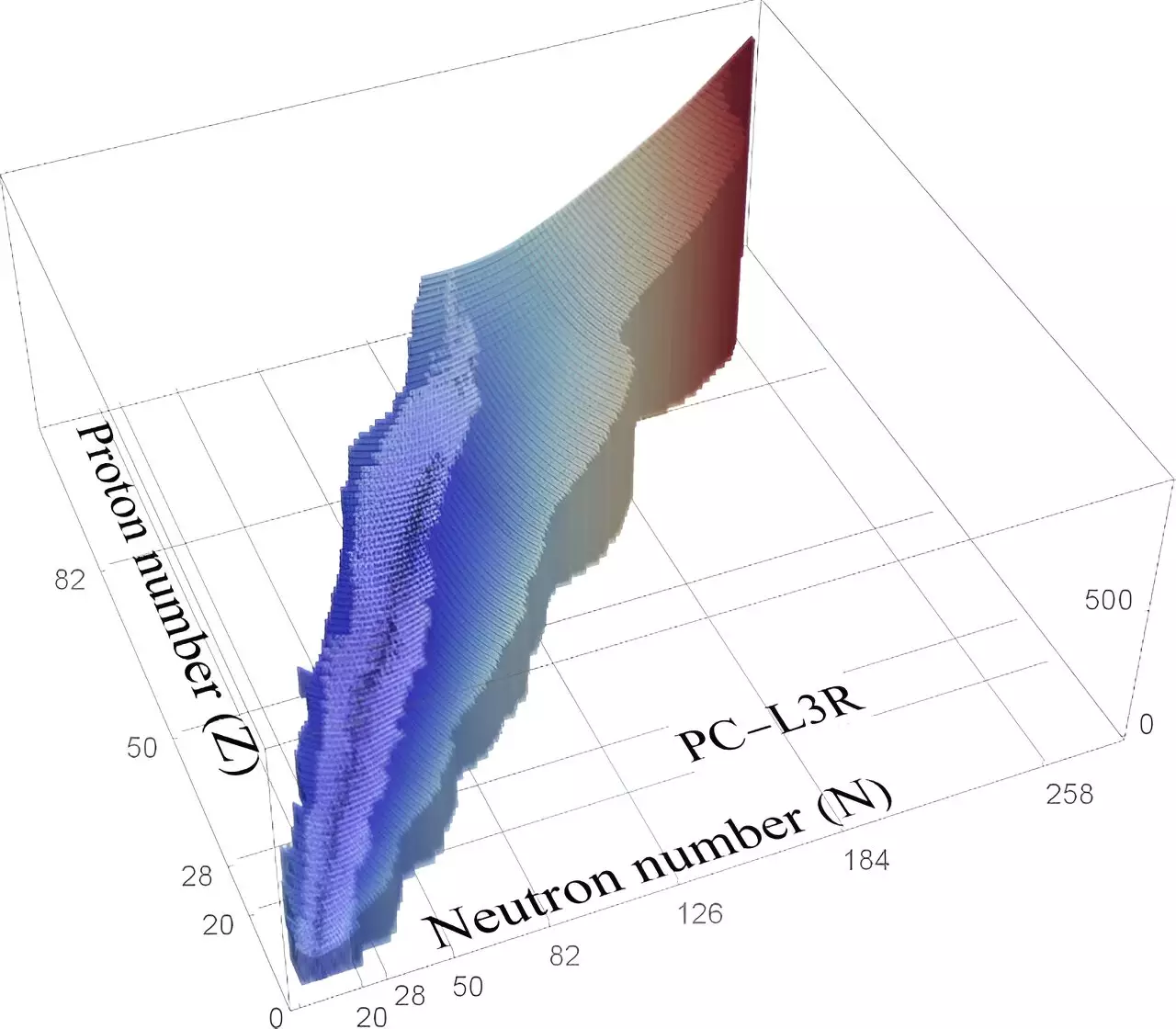The field of nuclear physics has always been focused on uncovering the secrets of the atomic nucleus. With the advent of new generation radioactive-ion beam facilities, researchers now have the opportunity to conduct previously challenging experiments and push the boundaries of our understanding even further. These facilities enable the discovery of new isotopes and the exploration of physics related to exotic nuclei far from the β-stability valley, thus deepening our knowledge of the origins of the chemical elements in the universe.
A recent study published in Atomic Data and Nuclear Data Tables by researchers from the Institute of Modern Physics (IMP) of the Chinese Academy of Sciences (CAS) and Technische Universität München utilized the covariant density functional theory to predict the existence of exotic nuclei. This theoretical framework has proven to be highly successful in studying the nuclear structure and interactions among nucleons. The researchers plugged in either a point-coupling interaction or a meson-exchange interaction to explore the ground state properties of all isotopic chains ranging from oxygen to darmstadtium.
To establish the existence of the newly discovered isotopes and determine the limits of an isotopic chain, it is crucial to determine their nuclear masses, radii, and half-lives. Reliable theoretical predictions of these characteristics serve as a guiding framework for experimental investigations. Measuring the last bound nuclei of isotopic chains not only validates nuclear theory but also enhances our understanding of nucleosyntheses in extreme astrophysical environments such as neutron star mergers, core-collapsed supernovae, and X-ray bursts.
The ground state properties of the isotopic chains under investigation include binding energies, one-neutron and two-neutron separation energies, root-mean-square radii of matter, neutron, proton, and charge distribution, Fermi surfaces, ground-state spins, and parities. These properties hold vital insights into the behavior of exotic nuclei and provide a testing ground for our understanding of quantum many-body systems.
In the pursuit of understanding the complexities of exotic nuclei, the researchers highlighted the importance of matching theoretical predictions with experimental findings. The existence of approximately 2,500 nuclides has been experimentally proven, but the potential for discovering more exotic nuclei and unraveling novel phenomena remains vast. The emergence of new facilities holds great promise in this endeavor, providing researchers with exciting opportunities to cross-check their theoretical models and uncover unexplored territories of nuclear physics.
The predicted ground-state properties of nuclei in this study have broader implications for future experiments and theoretical research in nuclear physics. By discussing the drip line of neutron and proton, halo phenomenon, and new magic number problem, the findings offer valuable guidance for ongoing and upcoming investigations. The potential of new generation radioactive-ion beam facilities in unlocking the mysteries of exotic nuclei is unparalleled, and the integration of theoretical predictions and experimental observations holds the key to further advancements in our understanding of the atomic nucleus.
The field of nuclear physics is undergoing a profound transformation with the availability of new generation radioactive-ion beam facilities. The ability to conduct previously challenging experiments and explore the realm of exotic nuclei offers unprecedented opportunities for scientific discovery. By employing the covariant density functional theory, researchers can predict the existence of new isotopes and gain insights into their ground state properties. The potential impact of these findings extends beyond the realm of theoretical physics, as they provide crucial guidance for future experiments and theoretical research. As we continue to unlock the mysteries of exotic nuclei, we inch closer to a comprehensive understanding of the origins of the chemical elements and the fascinating phenomena that govern our universe.


Leave a Reply